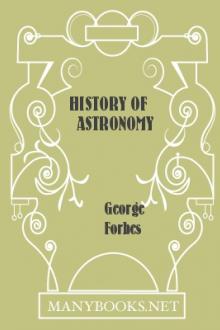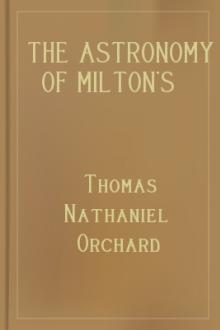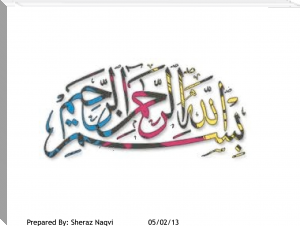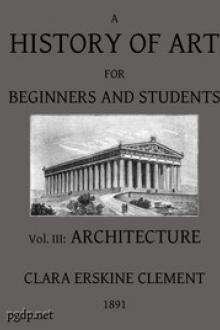History of Astronomy by George Forbes (classic children's novels TXT) 📕

- Author: George Forbes
- Performer: -
Book online «History of Astronomy by George Forbes (classic children's novels TXT) 📕». Author George Forbes
[Illustration: ANCIENT CHINESE INSTRUMENTS, Including quadrant, celestial globe, and two armillae, in the Observatory at Peking. Photographed in Peking by the author in 1875, and stolen by the Germans when the Embassies were relieved by the allies in 1900.]
The French Jesuits at Peking, in the seventeenth century, helped the Chinese in their astronomy. In 1875 the writer saw and photographed, on that part of the wall of Peking used by the Mandarins as an observatory, the six instruments handsomely designed by Father Verbiest, copied from the instruments of Tycho Brahe, and embellished with Chinese dragons and emblems cast on the supports. He also saw there two old instruments (which he was told were Arabic) of date 1279, by Ko Show-King, astronomer to Koblai Khan, the grandson of Chenghis Khan. One of these last is nearly identical with the armillae of Tycho; and the other with his “armillae æquatoriæ maximæ,” with which he observed the comet of 1585, besides fixed stars and planets.[3]
The discovery by Galileo of the isochronism of the pendulum, followed by Huyghens’s adaptation of that principle to clocks, has been one of the greatest aids to accurate observation. About the same time an equally beneficial step was the employment of the telescope as a pointer; not the Galilean with concave eye-piece, but with a magnifying glass to examine the focal image, at which also a fixed mark could be placed. Kepler was the first to suggest this. Gascoigne was the first to use it. Huyghens used a metal strip of variable width in the focus, as a micrometer to cover a planetary disc, and so to measure the width covered by the planet. The Marquis Malvasia, in 1662, described the network of fine silver threads at right angles, which he used in the focus, much as we do now.
In the hands of such a skilful man as Tycho Brahe, the old open sights, even without clocks, served their purpose sufficiently well to enable Kepler to discover the true theory of the solar system. But telescopic sights and clocks were required for proving some of Newton’s theories of planetary perturbations. Picard’s observations at Paris from 1667 onwards seem to embody the first use of the telescope as a pointer. He was also the first to introduce the use of Huyghens’s clocks for observing the right ascension of stars. Olaus Romer was born at Copenhagen in 1644. In 1675, by careful study of the times of eclipses of Jupiter’s satellites, he discovered that light took time to traverse space. Its velocity is 186,000 miles per second. In 1681 he took up his duties as astronomer at Copenhagen, and built the first transit circle on a window-sill of his house. The iron axis was five feet long and one and a-half inches thick, and the telescope was fixed near one end with a counterpoise. The telescope-tube was a double cone, to prevent flexure. Three horizontal and three vertical wires were used in the focus. These were illuminated by a speculum, near the object-glass, reflecting the light from a lantern placed over the axis, the upper part of the telescope-tube being partly cut away to admit the light. A divided circle, with pointer and reading microscope, was provided for reading the declination. He realised the superiority of a circle with graduations over a much larger quadrant. The collimation error was found by reversing the instrument and using a terrestrial mark, the azimuth error by star observations. The time was expressed in fractions of a second. He also constructed a telescope with equatoreal mounting, to follow a star by one axial motion. In 1728 his instruments and observation records were destroyed by fire.
Hevelius had introduced the vernier and tangent screw in his measurement of arc graduations. His observatory and records were burnt to the ground in 1679. Though an old man, he started afresh, and left behind him a catalogue of 1,500 stars.
Flamsteed began his duties at Greenwich Observatory, as first Astronomer Royal, in 1676, with very poor instruments. In 1683 he put up a mural arc of 140°, and in 1689 a better one, seventy-nine inches radius. He conducted his measurements with great skill, and introduced new methods to attain accuracy, using certain stars for determining the errors of his instruments; and he always reduced his observations to a form in which they could be readily used. He introduced new methods for determining the position of the equinox and the right ascension of a fundamental star. He produced a catalogue of 2,935 stars. He supplied Sir Isaac Newton with results of observation required in his theoretical calculations. He died in 1719.
Halley succeeded Flamsteed to find that the whole place had been gutted by the latter’s executors. In 1721 he got a transit instrument, and in 1726 a mural quadrant by Graham. His successor in 1742, Bradley, replaced this by a fine brass quadrant, eight feet radius, by Bird; and Bradley’s zenith sector was purchased for the observatory. An instrument like this, specially designed for zenith stars, is capable of greater rigidity than a more universal instrument; and there is no trouble with refraction in the zenith. For these reasons Bradley had set up this instrument at Kew, to attempt the proof of the earth’s motion by observing the annual parallax of stars. He certainly found an annual variation of zenith distance, but not at the times of year required by the parallax. This led him to the discovery of the “aberration” of light and of nutation. Bradley has been described as the founder of the modern system of accurate observation. He died in 1762, leaving behind him thirteen folio volumes of valuable but unreduced observations. Those relating to the stars were reduced by Bessel and published in 1818, at Königsberg, in his well-known standard work, Fundamenta Astronomiae. In it are results showing the laws of refraction, with tables of its amount, the maximum value of aberration, and other constants.
Bradley was succeeded by Bliss, and he by Maskelyne (1765), who carried on excellent work, and laid the foundations of the Nautical Almanac (1767). Just before his death he induced the Government to replace Bird’s quadrant by a fine new mural circle, six feet in diameter, by Troughton, the divisions being read off by microscopes fixed on piers opposite to the divided circle. In this instrument the micrometer screw, with a divided circle for turning it, was applied for bringing the micrometer wire actually in line with a division on the circle—a plan which is still always adopted.
Pond succeeded Maskelyne in 1811, and was the first to use this instrument. From now onwards the places of stars were referred to the pole, not to the zenith; the zero being obtained from measures on circumpolar stars. Standard stars were used for giving the clock error. In 1816 a new transit instrument, by Troughton, was added, and from this date the Greenwich star places have maintained the very highest accuracy.
George Biddell Airy, Seventh Astronomer Royal,[4] commenced his Greenwich labours in 1835. His first and greatest reformation in the work of the observatory was one he had already established at Cambridge, and is now universally adopted. He held that an observation is not completed until it has been reduced to a useful form; and in the case of the sun, moon, and planets these results were, in every case, compared with the tables, and the tabular error printed.
Airy was firmly impressed with the object for which Charles II. had wisely founded the observatory in connection with navigation, and for observations of the moon. Whenever a meridian transit of the moon could be observed this was done. But, even so, there are periods in the month when the moon is too near the sun for a transit to be well observed. Also weather interferes with many meridian observations. To render the lunar observations more continuous, Airy employed Troughton’s successor, James Simms, in conjunction with the engineers, Ransome and May, to construct an altazimuth with three-foot circles, and a five-foot telescope, in 1847. The result was that the number of lunar observations was immediately increased threefold, many of them being in a part of the moon’s orbit which had previously been bare of observations. From that date the Greenwich lunar observations have been a model and a standard for the whole world.
Airy also undertook to superintend the reduction of all Greenwich lunar observations from 1750 to 1830. The value of this laborious work, which was completed in 1848, cannot be over-estimated.
The demands of astronomy, especially in regard to small minor planets, required a transit instrument and mural circle with a more powerful telescope. Airy combined the functions of both, and employed the same constructors as before to make a transit-circle with a telescope of eleven and a-half feet focus and a circle of six-feet diameter, the object-glass being eight inches in diameter.
Airy, like Bradley, was impressed with the advantage of employing stars in the zenith for determining the fundamental constants of astronomy. He devised a reflex zenith tube, in which the zenith point was determined by reflection from a surface of mercury. The design was so simple, and seemed so perfect, that great expectations were entertained. But unaccountable variations comparable with those of the transit circle appeared, and the instrument was put out of use until 1903, when the present Astronomer Royal noticed that the irregularities could be allowed for, being due to that remarkable variation in the position of the earth’s axis included in circles of about six yards diameter at the north and south poles, discovered at the end of the nineteenth century. The instrument is now being used for investigating these variations; and in the year 1907 as many as 1,545 observations of stars were made with the reflex zenith tube.
In connection with zenith telescopes it must be stated that Respighi, at the Capitol Observatory at Rome, made use of a deep well with a level mercury surface at the bottom and a telescope at the top pointing downwards, which the writer saw in 1871. The reflection of the micrometer wires and of a star very near the zenith (but not quite in the zenith) can be observed together. His mercury trough was a circular plane surface with a shallow edge to retain the mercury. The surface quickly came to rest after disturbance by street traffic.
Sir W. M. H. Christie, Eighth Astronomer Royal, took up his duties in that capacity in 1881. Besides a larger altazimuth that he erected in 1898, he has widened the field of operations at Greenwich by the extensive use of photography and the establishment of large equatoreals. From the point of view of instruments of precision, one of the most important new features is the astrographic equatoreal, set up in 1892 and used for the Greenwich section of the great astrographic chart just completed. Photography has come to be of use, not only for depicting the sun and moon, comets and nebulae, but also to obtain accurate relative positions of neighbouring stars; to pick up objects that are invisible in any telescope; and, most of all perhaps, in fixing the positions of faint satellites. Thus Saturn’s distant satellite, Phoebe, and the sixth and seventh satellites of Jupiter, have been followed regularly in their courses at Greenwich ever since their discovery with the thirty-inch reflector (erected in 1897); and while doing so Mr. Melotte made, in 1908, the splendid discovery on some of the photographic plates of an eighth satellite of Jupiter, at an enormous distance from the planet. From observations in the early part of 1908, over a limited arc of its orbit, before Jupiter approached the sun, Mr. Cowell computed a retrograde orbit





Comments (0)